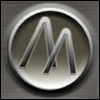Demo sounds great. I understand that this is a 'true stereo' reverb. When I use it as an insert on a stereo track and pan around, the reverb seems to follow the sound as expected. It seems to move around the room, I am assuming this is the 'true stereo' aspect at work?
My problem is, I understand this is probably a Cubase issue, but when I use it as a send then everything is summed to the middle. When I move the send pan arround the reverb DOES change, but doen't follow the sound as it does when it is an insert. I don't have the CPU to have every channel requiring this feauture having its own insert! Is there a solution so I can use the send and have it working in true stereo.
This issue seems the same in all the reverbs I have tried, but I can't get an answer anywhere! Sorry if this is the wrong forum, but your forum seems full of great replies
David




